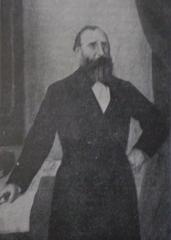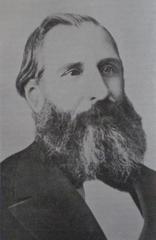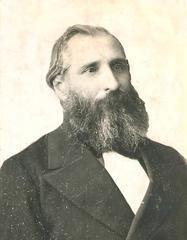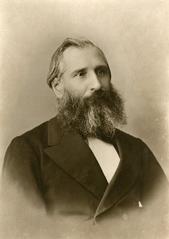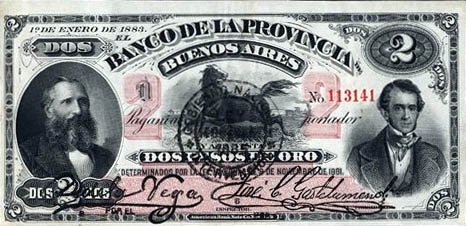
Adolfo Alsina Buenos Aires: Visiting Hours, Tickets, and Historical Sites Guide
Date: 14/06/2025
Introduction
Adolfo Alsina, located in the southwestern region of Buenos Aires Province, Argentina, is a destination brimming with frontier history, cultural richness, and natural beauty. Established in the late 19th century during Argentina’s administrative expansion, the district bears the imprint of the “Conquest of the Desert” and serves as an open window into the nation’s past. From the haunting ruins of Villa Epecuén—a spa town submerged for decades and now an evocative open-air museum—to the healing saline waters of Lago Epecuén, Adolfo Alsina offers a journey through both time and tradition (adolfoalsina.gov.ar; Tiplr).
Shaped by waves of European immigration, the district’s towns exhibit the architectural vision of Francisco Salamone and a vibrant local culture. Visitors are welcomed with lively festivals, mate-sharing rituals, tango events, and the flavors of regional gastronomy (volgagermaninstitute.org; Expat Info Desk). This guide provides detailed information on historical sites, visiting hours, ticketing, transportation, accommodations, and practical travel advice to ensure a rewarding experience in Adolfo Alsina (secretsofbuenosaires.com).
Table of Contents
- Discover Adolfo Alsina: Historical Overview
- Top Attractions and Visitor Information
- Villa Epecuén: Visiting Hours, Tickets, and Historical Sites
- History and Significance
- Visiting Hours and Tickets
- Exploring the Ruins
- Lago Epecuén: Natural Wonder and Wellness
- Carhué: Gateway and Spa Town
- Museo de Villa Epecuén
- Architectural Heritage: Francisco Salamone
- Outdoor Activities and Ecotourism
- Local Gastronomy
- Visitor Tips
- Cultural Events and Festivals
- Unique Experiences
- Local Culture and Historical Sites: A Visitor’s Guide
- Travel Planning
- Visuals and Media
- Summary and References
Discover Adolfo Alsina: Historical Overview
Foundation and Early History
Adolfo Alsina Partido was formally established on July 28, 1886, as part of Buenos Aires Province’s late 19th-century administrative reorganization (adolfoalsina.gov.ar). Carhué, the district’s administrative center, is situated on the shores of Lago Epecuén and holds a key place in regional history. The city itself was founded in 1877 by Colonel Nicolás Levalle during the “Conquest of the Desert,” a foundational moment commemorated annually.
The Frontier and the “Zanja de Alsina”
The region’s frontier significance is underscored by the “Zanja de Alsina,” a defensive trench constructed in 1875 under Minister of War Dr. Adolfo Alsina to protect settlers from indigenous raids. Although never completed, a network of 112 forts—including one in Carhué—helped secure the area (adolfoalsina.gov.ar).
Administrative Evolution and Demographics
Adolfo Alsina covers a broad area with low population density (2.77 inhabitants/km², 2001 census), divided into administrative cuarteles and towns like Arano, Villa Maza, and San Miguel Arcángel. The region’s demographic and cultural landscape reflects a strong European immigrant influence (es.wikipedia.org).
Architectural and Cultural Heritage
Landmarks such as Carhué’s Palacio Municipal (inaugurated 1938) and the German-influenced town of San Miguel Arcángel showcase the district’s diverse heritage (volgagermaninstitute.org).
Top Attractions and Visitor Information
Visiting Hours and Tickets
- Palacio Municipal, Carhué: Monday–Friday, 9:00 AM–5:00 PM (Free)
- Museo Histórico Regional: Tuesday–Sunday, 10:00 AM–6:00 PM (ARS 200, discounts for students/seniors)
- Villa Epecuén Ruins: Open year-round, daylight hours (Free)
Accessibility and Guided Tours
Road access is available from Buenos Aires and nearby provinces. Many sites are wheelchair accessible, though some ruins require assistance. Guided tours can be booked locally, focusing on history, indigenous heritage, and wellness experiences.
Travel Tips
- Best Time to Visit: Spring (September–November) and Fall (March–May) for mild weather.
- What to Bring: Comfortable walking shoes, sun protection, and a camera.
- Cultural Events: Attend local festivals for authentic experiences.
Historical Landmarks and Sites
Key sites include remnants of the “Zanja de Alsina,” the central plaza of Carhué, and the Villa Epecuén ruins—an open-air museum revealing the effects of a natural disaster and human resilience (adolfoalsina.gov.ar).
Villa Epecuén: Visiting Hours, Tickets, and Historical Sites
History and Significance
Founded in the 1920s on Lago Epecuén’s shore, Villa Epecuén was a thriving spa town renowned for its healing waters. A devastating flood in 1985 submerged the town for years; the receding waters in 2009 exposed haunting, salt-encrusted ruins (Tiplr).
Visiting Hours and Tickets
- Hours: Daily, 8:00 AM–6:00 PM (recommended daylight visits)
- Tickets: Free to explore the ruins; guided tours available for a fee (book locally or online)
- Accessibility: Terrain is uneven and may be challenging for visitors with mobility impairments.
Exploring the Ruins
Highlights include the old train station, the Francisco Salamone-designed slaughterhouse, salt-encrusted streets, and a partially submerged cemetery. Guided tours provide valuable historical context.
Lago Epecuén: Natural Wonder and Wellness
The lake’s mineral-rich, hypersaline waters are similar to the Dead Sea, providing buoyancy and reputed therapeutic benefits. Bathing is free and accessible year-round (Tiplr).
Carhué: Gateway and Spa Town
Carhué, 7 km from Villa Epecuén, offers modern accommodations, thermal baths, and wellness centers like the Epecuén Hotel & Spa (Tiplr). The town hosts cultural events and serves as an ideal base for exploring the region.
Museo de Villa Epecuén
This museum in Carhué preserves the memory of Villa Epecuén through artifacts, photos, and personal accounts, providing deeper understanding of the town’s history.
Architectural Heritage: Francisco Salamone
Salamone’s legacy is visible in monumental public works like Carhué’s Municipal Palace and the cemetery portal, both featuring Art Deco and Futurist styles.
Outdoor Activities and Ecotourism
Birdwatching, hiking, cycling, kayaking, and paddleboarding are popular around the lake and ruins.
Local Gastronomy
Enjoy regional cuisine—beef asado, empanadas, desserts—often flavored with local herbs and mineral salts.
Visitor Tips
- Getting There: Bus from Buenos Aires (~8 hours); nearest airport in Bahía Blanca (180 km).
- What to Bring: Sun protection, sturdy shoes, swimwear, towel, camera.
- Respect: Villa Epecuén is a sensitive historical site; follow guidelines and avoid disturbing ruins.
Cultural Events and Festivals
Events include Epecuén Remembers (guided tours, talks), Carnival, and local fiestas.
Unique Experiences
- Photography: The ruins are especially photogenic at sunrise and sunset.
- Wellness Retreats: Spa packages combine lake bathing and therapies.
- Historical Reenactments: Occasionally staged by local groups.
Local Culture and Historical Sites: A Visitor’s Guide
Cultural Landscape and Traditions
Adolfo Alsina’s culture is a blend of European influences and Argentine traditions. Social life revolves around mate drinking, tango, and communal festivals (Expat Info Desk).
Key Monuments and Sites
- Carhué Railway Station: Open daily, 9:00 AM–6:00 PM, with a small museum.
- Laguna Epecuén Ruins: Open year-round; guided tours available.
- San José Church: Neoclassical, 8:00 AM–8:00 PM, site of local religious events.
Social Interactions and Customs
Locals are known for warm greetings (single cheek kiss), informal punctuality, and expressive conversation. Spanish is the primary language, with the Rioplatense dialect prevalent (Lonely Planet).
Gastronomy, Mate, and Tango
Traditional asado, shared mate, and tango events (milongas) exemplify local hospitality and culture (Over Your Place).
Festivals and Public Spaces
Major events include Carnival, agricultural fairs, and national holidays. Plazas and public markets host performances and gatherings (PlanetWare).
Practical Tips and Accessibility
Dress is smart-casual. English is less common, so basic Spanish is useful. Most sites are accessible, but some historic ruins may present challenges (Short Girl on Tour).
Travel Planning
Getting There and Around
- By Bus: Regular services from Buenos Aires (Retiro Terminal) with journey times of 7–8 hours.
- By Car: National Route 5 and Provincial Route 60; rental cars available.
- Local Transport: Taxis and remises; walking/cycling within towns.
Accommodations
Carhué offers hotels, spa resorts, hostels, guesthouses, and cabins. Lakefront options are popular; book ahead for peak seasons (secretsofbuenosaires.com).
Best Time to Visit
Spring and fall offer mild temperatures and fewer crowds (travellersworldwide.com). Summer is hot; winter is quieter but may see reduced hours for some attractions.
Money, Safety, and Health
- Currency: Argentine peso (ARS). Cash is preferred; carry enough for entrance fees and small purchases.
- Safety: Low crime rates, but usual precautions apply.
- Health: Tap water is potable; bottled water for sensitive stomachs. Travel insurance recommended (travel.gc.ca).
Packing Essentials
Universal adapter, layered clothing, swimwear, sturdy shoes, rain gear, and sun protection (secretsofbuenosaires.com).
Customs and Entry Requirements
Most nationalities can visit visa-free for up to 90 days. No fresh food or animal products allowed (worldbaggagenetwork.com).
FAQ
Q: What are the visiting hours for main attractions?
A: Lago Epecuén and Villa Epecuén, 8:00 AM–6:00/7:00 PM; museums 10:00 AM–5:00/6:00 PM (closed Mondays).
Q: Are tickets required?
A: Most outdoor sites are free. Museums and spa facilities charge admission; guided tours are extra.
Q: How do I get around locally?
A: Taxis/remises are available; no public transit. Walking/biking common for short distances.
Q: Is Adolfo Alsina safe?
A: Yes, with standard safety precautions.
Q: When is the best time to visit?
A: Spring and fall for pleasant weather and fewer crowds.
Visuals and Media
Interactive maps and virtual tours can be accessed via the official tourism website (adolfoalsina.gov.ar).
Summary
Adolfo Alsina is a destination where Argentina’s frontier history, spa culture, and vibrant traditions intertwine. With accessible historical sites, immersive festivals, unique wellness experiences, and the warmth of its people, visitors find both reflection and adventure. Plan ahead for accommodations and tours, respect the sensitivity of sites like Villa Epecuén, and immerse yourself in the rich local culture for a truly memorable journey (adolfoalsina.gov.ar; Tiplr; Expat Info Desk; secretsofbuenosaires.com).
References and Useful Links
- adolfoalsina.gov.ar
- Tiplr: Villa Epecuén Under Water for 25 Years
- Volga German Institute: San Miguel Arcángel, Adolfo Alsina Partido, Buenos Aires Province
- Expat Info Desk: Local Customs in Buenos Aires
- Secrets of Buenos Aires: Buenos Aires Travel Checklist
- Over Your Place: Buenos Aires Local Culture, Traditions & Festivals
- Lonely Planet: Buenos Aires Experiences
- PlanetWare: Buenos Aires Attractions
- Short Girl on Tour: Tips for Visiting Buenos Aires
- Travellers Worldwide: Best Time to Visit Buenos Aires
- worldbaggagenetwork.com: Argentina Customs Regulations
- travel.gc.ca: Argentina Travel Advice


